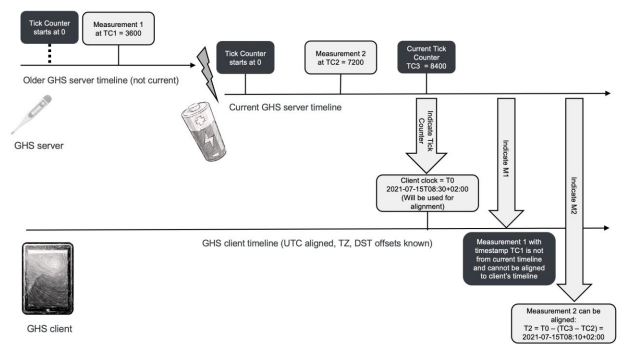One of the key reasons why Bluetooth® technology has emerged as the global wireless standard powering the IoT is its rate of evolution. The hard work and collaboration between Bluetooth Special Interest Group (SIG) member companies has driven the continuous innovation of the technology and has allowed Bluetooth technology to meet the growing demand for wireless communication across countless use cases for more than 20 years.

The Bluetooth Core Specification is one of the key building blocks that has defined the technology and enabled the development of a thriving ecosystem of interoperable Bluetooth enabled devices. Like all Bluetooth specifications, the core specification is regularly updated and enhanced by the Bluetooth SIG Core Working Group to satisfy evolving technology and market needs. Updates to the Bluetooth Core Specification cover a wide spectrum, from enhancements to existing features to the introduction of major new features that represent significant advancements to the technology and open new possibilities for wireless innovation. The release of the Bluetooth Low Energy (LE) radio, the introduction of LE Coded PHY for longer range, and, more recently, the release of Bluetooth® Direction Finding are just a few examples of major new features and enhancements that have enabled Bluetooth technology to continue to expand its capabilities and redefine what is possible in wireless communication.
On 13 July 2021, the Bluetooth SIG released version 5.3 of the Bluetooth® Core Specification. This paper, Bluetooth® Core Specification Version 5.3 Feature Enhancements, summarizes the spec and explains each change.
The latest version adds several feature enhancements, including enhancements to Periodic Advertising, Encryption Key Size Control, and Channel Classification. The latest version also incorporates a new Connection Subrating feature and removes the Alternate MAC and PHY (AMP) Extension. These updates have the potential to improve reliability, energy efficiency, and user experience in many Bluetooth® enabled products.
Periodic Advertising Enhancement
One new enhancement is that the AdvDataInfo field may now be included in Periodic Advertising packets, enabling more efficient processing of redundant data. Any Bluetooth® Low Energy (LE) product that utilizes Periodic Advertising for broadcast data communications, as well as the technique of transmitting redundant data to increase reliability, can now provide an energy-savings benefit to receiving devices.
The automatic transmission of multiple packets containing the same data is an effective technique to increase reliability in wireless broadcast communication. Bluetooth® broadcast devices often transmit multiple copies of the same data in rapid succession to increase the probability the data is received. This practice does however mean that a receiving device will often receive data it has already successfully received and processed. By allowing transmitting devices to include the AdvDataInfo field in packets sent via Periodic Advertising, receiving devices can now recognize when they receive a packet containing data they already successfully processed and opt to discard it immediately in the controller rather than pass it up to the host. The sooner a receiving device can identify and discard packets containing redundant data, the less energy it spends processing those packets and the more time it can spend scanning other channels. In other words, not having to fully process packets containing redundant data not only has an energy savings, but it can also increase the RX duty cycle of one of the other channels.
![]()
FEATURED DOWNLOAD
Bluetooth Core Specification Version 5.3 Feature Enhancements
Bluetooth® Core Specification version 5.3 includes several feature enhancements with the potential to improve reliability, energy efficiency, and user experience in many types of Bluetooth enabled products. This document summarizes and explains each change.
Encryption Key Size Control Enhancements
New and enhanced Host Controller Interface (HCI) commands provide more efficient methods for hosts to ensure a minimum acceptable key length is used to encrypt a connection between Bluetooth Classic (BR/EDR) devices. These HCI enhancements can improve signaling efficiency in many Bluetooth Classic products, as the use of encryption is either mandatory or highly encouraged in all Bluetooth BR/EDR connections.
Bluetooth® wireless devices typically use encryption to ensure unauthorized third parties cannot access data being transmitted between two connected devices. One key factor that determines the strength of the protection provided is the size, or length, of the key being used to encrypt the data. In Bluetooth Classic (BR/EDR), the key size used to encrypt data is negotiated by the two controllers during connection establishment. It is up to the hosts to subsequently query their controllers to ensure a key of an acceptable minimum length has been selected, and if not, the hosts can choose to not send data over the connection. While this method can ensure data is not transmitted over connections that hosts do not see as appropriately protected, it is not the most efficient.
To improve the situation, Bluetooth Core Specification version 5.3 introduces a new optional Host Controller Interface (HCI) command (Set Min Encryption Key Size) that enables a host to specify the minimum key size a controller may accept when establishing a connection to another device. In addition, the current HCI command controllers use to inform hosts when the encryption settings on an existing connection have been changed (Encryption Change Event) has been enhanced to include the key size of the changed connection, improving signaling efficiency by eliminating the need for a host to subsequently query the controller to discover that information.

Connection Subrating
A new connection subrating feature enables rapid switching between low and high duty cycles on established LE ACL connections, improving the UX of certain use cases.
A low duty cycle connection uses little power, while a high duty cycle connection will use more power but provide higher bandwidth. Some Bluetooth® device types are required to maintain a low duty cycle while performing their primary function to conserve power while also supporting additional use cases that require a higher duty cycle as needed. For example, a Bluetooth hearing aid spends most of its time in a low duty cycle while amplifying sound but must quickly transition to support a higher duty cycle if the user receives a phone call or plays music on her smartphone.
Changes to the duty cycle can take time. Often, the time it takes to update the connection can come at the expense of the user experience. Connection subrating achieves a power-saving low duty cycle in a different way and can switch to a high duty cycle faster than a non-subrated connection. Subrated connections are also able to handle variable packet rates or bursty traffic more efficiently. The ability to switch quickly from a low duty cycle connection to a high duty cycle connection when required will provide an improved user experience for some important product types.
Use cases expected to benefit from subrated connections include Bluetooth LE Audio products such as hearing aids and Bluetooth monitoring systems which use sensors.
Channel Classification Enhancement
Bluetooth Low Energy (LE) Peripheral devices can now perform channel classification and influence the channel map used for adaptive frequency hopping, increasing connection reliability in certain situations.
Enabling Bluetooth LE Peripheral devices to influence the adaptive frequency hopping (AFH) channel map can improve the throughput and reliability of connections where Central and Peripheral devices are not in close proximity.
When two Bluetooth® enabled devices are connected, a spread spectrum technique called adaptive frequency hopping (AFH) is used. Bluetooth technology divides the 2.4GHz (ISM) frequency band into smaller channels and rapidly hops between those channels when transmitting packets. Channels are chosen using a channel selection algorithm and a table of data called the channel map which classifies each channel as either used (suitable for use) or unused (not suitable for use).

Prior to version 5.3 of the core specification, Bluetooth Low Energy channel classification was performed only by the Central device. However, if two connected devices are not in close proximity with each other, the radio conditions of the Peripheral device may differ from those experienced by the Central. Consequently, when channel classification is performed only by the Central device, it is possible that the channel map can contain channels classified as used which are not a viable choice for the remote Peripheral. This can increase the chance of packet collisions and has the potential to degrade throughput.
Channel classification in Bluetooth LE may now be performed by the Peripheral device as well as the Central. The Peripheral can report its channel classifications to the Central device so they too can be considered when updating the Central device’s channel map. The channel classification enhancement enables both devices to determine which channels are performing well and suitable for use, reducing the likelihood of packet collisions and boosting throughput and reliability.
All Bluetooth Low Energy (LE) connected devices can benefit from Peripheral devices now being able to perform channel classification and influence the AFH channel map.
Removal of the Alternate MAC and PHY (AMP) Extension
The Alternate Media Access Control and Physical layer extension (AMP) allows a Bluetooth system to include one or more secondary controllers alongside a primary Bluetooth BR/EDR controller. Secondary controllers allow the use of the IEEE 802.11 MAC and PHY protocols instead of the standard Bluetooth layers that are part of the primary controller.
The frequency with which AMP has been used in qualified Bluetooth products is low and the Bluetooth Special Interest Group (SIG) has made the decision to remove this feature from Bluetooth Core Specification version 5.3. Members will still be able to qualify products that use AMP against an earlier version of the Bluetooth Core Specification until further notice.
![]()
FEATURED PAPER
Bluetooth Core Specification Version 5.3 Feature Enhancements
Bluetooth® Core Specification version 5.3 includes several feature enhancements with the potential to improve reliability, energy efficiency, and user experience in many types of Bluetooth enabled products. This document summarizes and explains each change.























